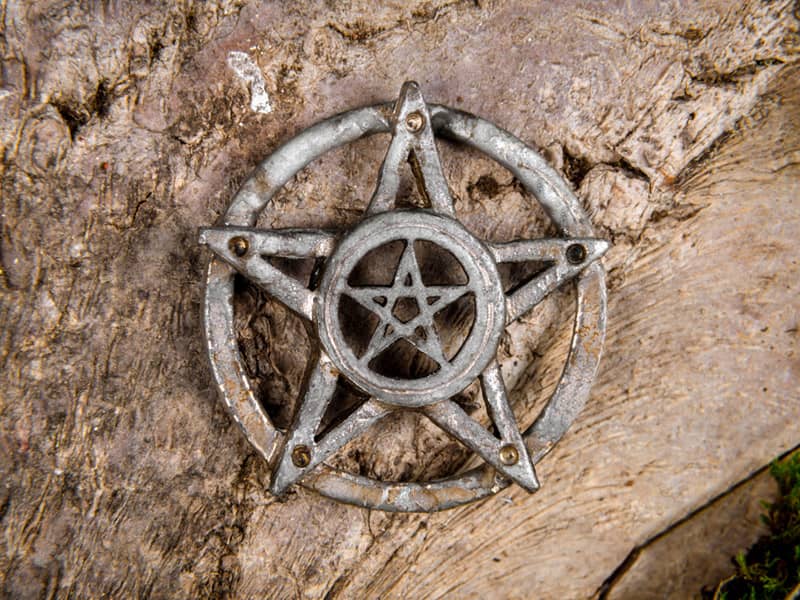Far from solemn occasions, Northern Heathen celebrations are about joy and abundance. The Heathen faith of Asatru embraces life, forging bonds of caring and connection with Gods, Goddesses, kith, kin, and local spirits, called wights.
Speaking to the local land wights, and seeking their consent to a gathering before it takes place, is considered common courtesy among Reconstructionists. In a secluded place before the gathering begins, a child is often chosen to place offerings such as porridge and butter out for the wights. These spirits were on the land first, and the gift of their consent deserves a gift in return.
In honor of the strength of light and warmth that are Sunna's blessing, fire is a central part of the celebration at this Holy Tide.
A focal point is a bonfire set ablaze early on Midsummer Eve. Adding fuel to a Midsummer bonfire is said to bring good fortune, and celebrants throw in flowers and other burnt offerings-including little dolls of twisted straw that have been wished upon. Dancing, singing, and telling tales around the blaze are also traditional. Leaping through the flames for luck, health, good crops-or loving relationships-is common behavior at a Midsummer celebration.
Creating Sunwheels-flaming wheels rolled down grassy hills-are a traditional way of honoring Sunna's waning days after the solstice. For those wary of the rolling flames, decorations in the form of a Sunwheel-an equal-armed cross inside a circle, made from wire, beads, pipe cleaners, Mason jar lids, almost anything you can think of-as well as Sunwheel-shape cookies and cakes can be safely substituted and hung on a Midsummer tree.
If the celebration is held by a pond or lake, celebrants often craft model Viking longboats, fill them with symbolic gifts, and then set them adrift and ablaze in reverence to the ancestors and their funeral practices.
Midsummer is an auspicious time for divination. Runes-mystery symbols provided by Odin, the All-Father-are often used for readings. Signs and dreams around this Holy Tide are given special respect, as are portents of birds, clouds, and other reflections of the Northern Way's connection to nature. Joy and fellowship abound, nurtured by fine food and good company.
When the long day wanes and Sunna starts to dip behind the horizon, Heathen folk gather once again around the bonfire to stand in Blot (worship) to those they term their Eldest Kin. Those Gods and Goddesses of the Northern Pantheon are hailed in this ancient rite of passing a mead horn among those assembled. This act of sharing a hallowed drink forges bonds of caring and well being between the people and the Gods, drawing the mind and soul of man closer to the divine.
A vigil is kept through the night to greet Sunna's return with the dawn. During this watch, the celebrants join in another sacred rite, Sumble. The mead horn is again passed, as praise, stories, and boasts are exchanged. Those assembled forge bonds of kith and kin with each other, deepening friendships and family relations with this holy sharing.
As Sunna's chariot again appears at the dawning of the Summer Solstice, another Great Blessing has been celebrated. The Holy Wheel of the year has moved on.
For more information, the authors recommend:

